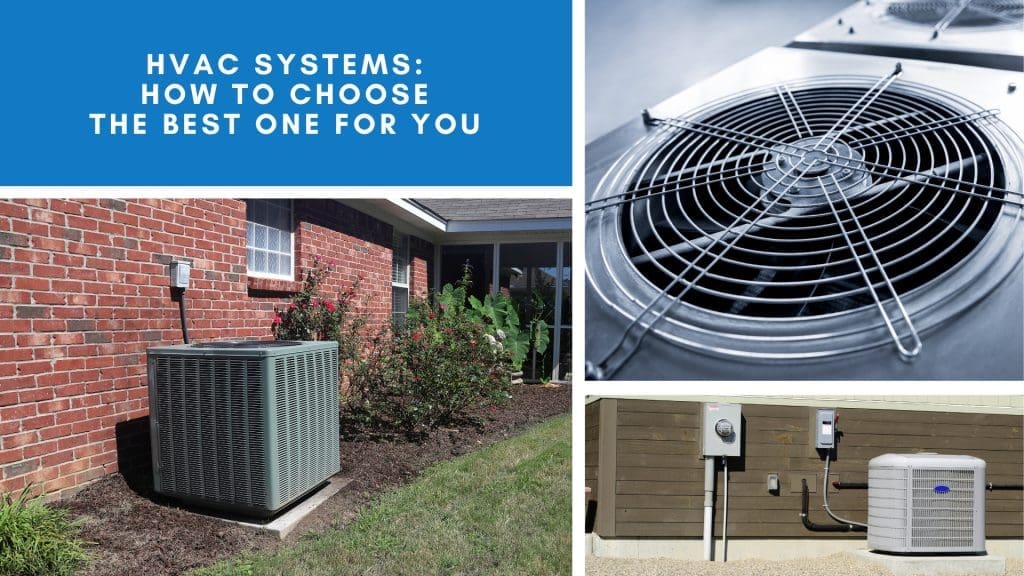As a homeowner, understanding the Essential Parts of HVAC systems can save you time, money, and stress. Whether you’re a small business owner, working from home, or managing a bustling household, knowing a bit about your HVAC system can help you make
The Core Components of an HVAC System
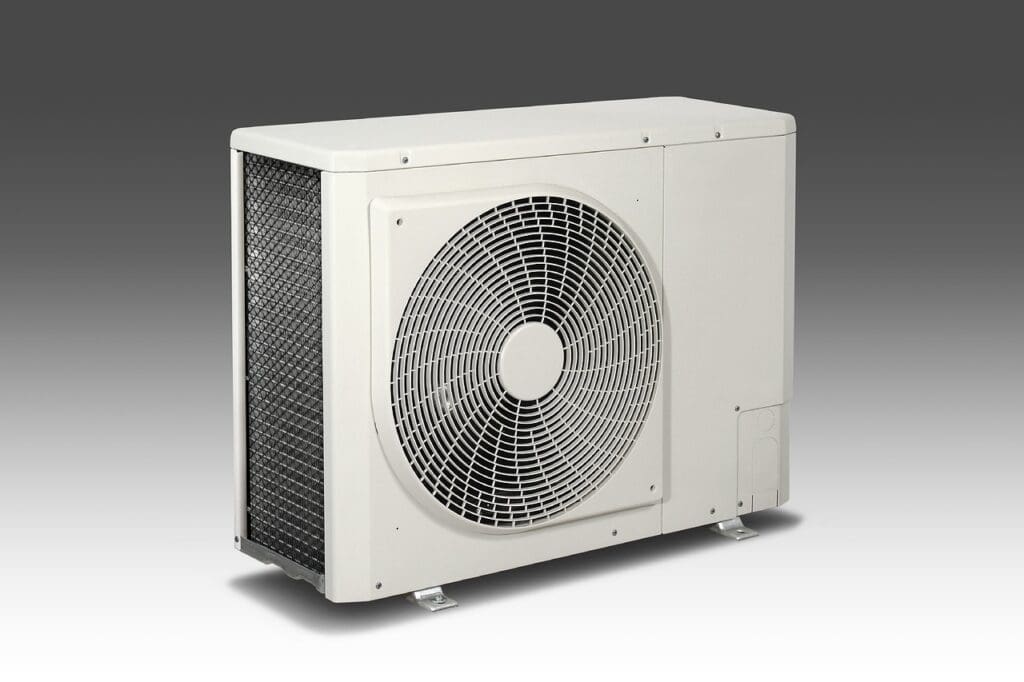
The HVAC system, short for Heating, Ventilation, and Air Conditioning, is a complex network designed to regulate indoor temperatures and ensure air quality. Here are the primary components you’ll encounter in most residential HVAC systems:
1. The Furnace
The furnace is the powerhouse of the HVAC system, responsible for heating air that circulates through your home. It operates by burning fuel (commonly natural gas, oil, or electricity) to generate heat. Furnaces are typically located in basements, attics, or dedicated closets.
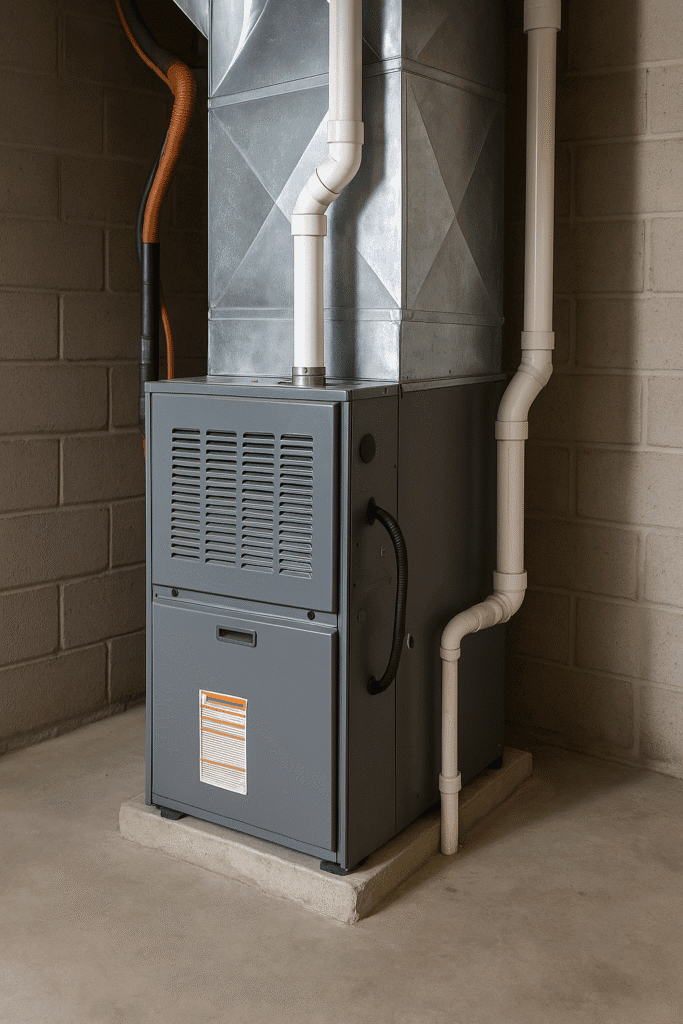
Types of Furnaces
There are several types of furnaces, including single-stage, two-stage, and modulating furnaces. Single-stage furnaces operate at full capacity or not at all, while two-stage furnaces offer a middle ground by operating at a lower capacity when less heat is needed. Modulating furnaces adjust their heat output in small increments, offering the highest efficiency and comfort.
Energy Efficiency and Ratings
Understanding the energy efficiency of your furnace is crucial. Look for the Annual Fuel Utilization Efficiency (AFUE) rating, which indicates how efficiently a furnace converts fuel into heat. Higher AFUE ratings mean more efficient furnaces, which can lead to significant energy savings over time.
Common Furnace Issues
Furnaces may encounter issues such as ignition problems, noisy operation, or frequent cycling. Regular maintenance and timely repairs can help mitigate these issues, ensuring your furnace operates smoothly throughout the heating season.
2. Air Conditioner
While the furnace provides heat, the air conditioner cools your home. It absorbs heat from indoor air and releases it outside, using a refrigerant to facilitate this heat exchange. The air conditioner’s key parts include the evaporator coil, condenser coil, and compressor.
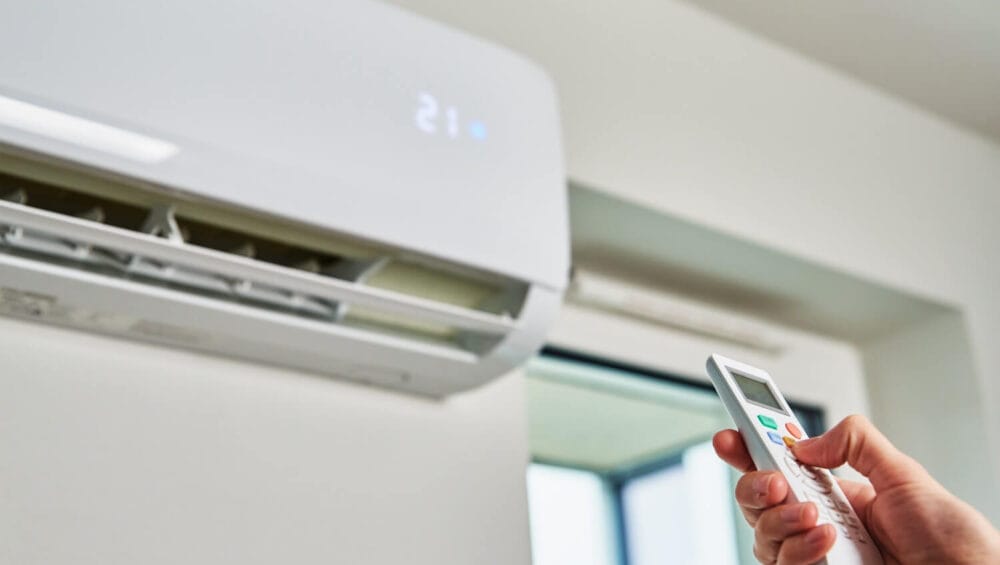
Types of Air Conditioning Systems
Air conditioning systems come in various forms, such as central air conditioners, ductless mini-splits, and window units. Central air conditioners are prevalent in homes with existing ductwork, while ductless systems are suitable for homes without ducts. Window units are ideal for cooling single rooms.
SEER Ratings and Energy Savings
The Seasonal Energy Efficiency Ratio (SEER) rating measures the efficiency of an air conditioning system. Higher SEER ratings indicate more efficient systems that consume less electricity, resulting in lower utility bills and a reduced carbon footprint.
Common Air Conditioner Problems
Air conditioners can face issues such as refrigerant leaks, frozen coils, and sensor problems. Regular maintenance, including cleaning coils and checking refrigerant levels, can prevent these issues and extend the lifespan of your air conditioner.
3. Ductwork
Ductwork is the network of tubes that transports heated or cooled air from your HVAC system to different rooms in your home. Properly installed and maintained ducts are essential for efficient air distribution and energy savings. Ducts are usually hidden in ceilings, walls, and floors.
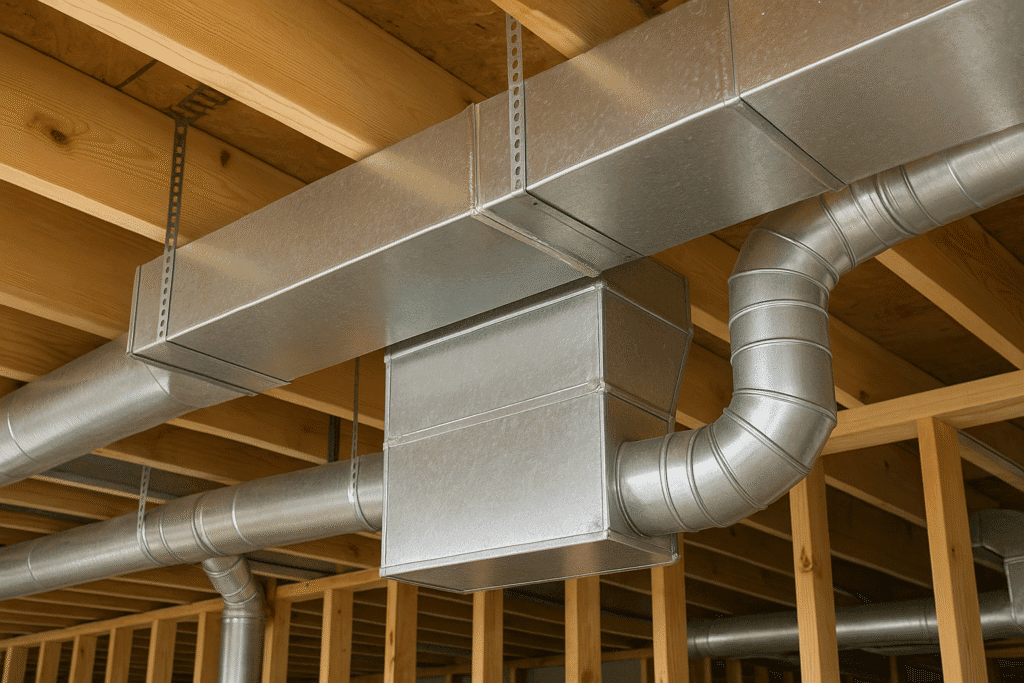
Importance of Proper Installation
Proper duct installation is crucial for efficient airflow. Poorly installed ducts can lead to air leaks, which decrease system efficiency and increase energy bills. Ensuring a professional installation can prevent such issues.
Insulation and Sealing
Insulating and sealing ducts help maintain the temperature of the air as it travels through your home. This step prevents energy loss and ensures that your HVAC system operates at peak efficiency, reducing overall energy consumption.
Regular Maintenance and Cleaning
Regular duct maintenance involves inspecting for leaks, cleaning dust and debris, and ensuring the ducts are properly sealed. Clean ducts improve indoor air quality and system performance, providing a healthier living environment.
4. Thermostat
The thermostat is the control center of your HVAC system. It allows you to set your desired temperature and activates the HVAC components to maintain that temperature. Modern thermostats often come with programmable and smart features for enhanced convenience and energy efficiency.
Programmable Thermostats
Programmable thermostats allow you to set different temperatures for various times of the day. This feature can lead to significant energy savings by reducing heating and cooling when you’re not home.
Smart Thermostats and Connectivity
Smart thermostats offer advanced features like remote access, learning capabilities, and integration with home automation systems. These features enable precise control over your HVAC system, enhancing both comfort and energy efficiency.
Troubleshooting Thermostat Issues
Common thermostat issues include incorrect readings, unresponsive controls, or short cycling. Troubleshooting often involves checking the power source, recalibrating the unit, or replacing batteries.
5. Heat Exchanger
Situated within the furnace, the heat exchanger warms the air that the blower fan sends throughout the house. It transfers heat from the combustion chamber to the air without mixing the gases, ensuring safety and efficiency.
Function and Safety
The heat exchanger’s primary function is to transfer heat without allowing combustion gases to mix with the air. This separation is critical for safety, preventing harmful gases like carbon monoxide from entering your home.
Signs of a Faulty Heat Exchanger
Signs of a faulty heat exchanger include unusual smells, visible cracks, and reduced heating efficiency. Regular inspections can identify potential issues early, preventing costly repairs and ensuring safety.
Maintenance and Longevity
Regular maintenance, including cleaning and inspections, can extend the lifespan of your heat exchanger. Ensuring proper airflow and preventing overheating are essential for maintaining its efficiency and safety.
Additional Components to Know
by Cristina Gottardi (https://unsplash.com/@cristina_gottardi)
1. Refrigerant Lines
These lines carry refrigerant between the indoor evaporator coil and the outdoor condenser unit. They are critical for cooling operations, and any leaks or blockages can significantly impact your system’s performance.
Importance of Refrigerant Levels
Maintaining the correct refrigerant levels is crucial for efficient cooling. Low levels can lead to increased energy consumption and reduced cooling capacity, while overcharging can damage the system.
Detecting and Repairing Leaks
Refrigerant leaks can be challenging to detect. Signs include reduced cooling efficiency and hissing noises. Professional technicians use specialized equipment to locate and repair leaks, ensuring optimal performance.
Impact on the Environment
Refrigerants can have significant environmental impacts if released. Newer systems use environmentally friendly refrigerants, reducing the HVAC system’s carbon footprint and complying with modern regulations.
2. Blower Motor
The blower motor powers the fan that moves air through the ducts. It is crucial for both heating and cooling functions. A well-maintained blower motor ensures optimal airflow and efficient operation.
Types of Blower Motors
Blower motors come in single-speed, multi-speed, and variable-speed models. Variable-speed motors offer the highest efficiency, adjusting speed based on the system’s needs, providing more consistent airflow and temperature control.
Signs of Blower Motor Problems
Symptoms of blower motor issues include weak airflow, unusual noises, and overheating. Regular maintenance, such as lubricating moving parts and checking electrical connections, can prevent these problems.
Maintenance and Replacement
Routine inspections and cleaning can prolong the life of your blower motor. If replacement is necessary, consider upgrading to a more efficient model to improve system performance and reduce energy costs.
3. Vents and Registers
Vents and registers are the visible parts of your HVAC system that you see in each room. They allow air to flow into and out of rooms, and their placement can affect how evenly your home is heated or cooled.
Strategic Placement for Efficiency
The strategic placement of vents and registers can enhance system efficiency. Properly positioned vents ensure even air distribution, reducing hot and cold spots in your home.
Cleaning and Maintenance
Regularly cleaning vents and registers prevents dust buildup, improving air quality and system efficiency. Ensure they are not blocked by furniture or other obstructions to maintain optimal airflow.
Troubleshooting Common Issues
Common issues with vents and registers include blockages, damage, and noisy operation. Routine checks and maintenance can address these problems, ensuring they function effectively.
4. The Compressor
The compressor is located in the outdoor unit of the air conditioner. It pumps the refrigerant through the system, enabling heat exchange. A faulty compressor can lead to inefficient cooling or a complete system breakdown.
Function and Role
The compressor’s role is to pressurize the refrigerant, transforming it into a high-pressure gas necessary for the cooling process. It is a critical component for the air conditioner’s functionality.
Signs of Compressor Failure
Signs of compressor failure include warm air from vents, strange noises, and frequent system shutdowns. Early diagnosis and repair can prevent further damage and costly replacements.
Repair and Replacement Options
While some compressor issues can be repaired, severe damage may require replacement. Consult a professional technician to evaluate the condition and recommend the best course of action.
The Importance of Electrical Components
While mechanical parts are essential, the electrical components of an HVAC system are equally crucial for its operation:
1. Electrical Wiring
This wiring connects various parts of the HVAC system, allowing them to communicate and function together. Proper wiring ensures that the system operates safely and efficiently.
Importance of Professional Installation
Professional installation of electrical wiring ensures safety and compliance with local codes. Incorrect wiring can lead to system malfunctions and pose safety risks.
Troubleshooting Wiring Issues
Common wiring issues include loose connections, frayed wires, and short circuits. Regular inspections and timely repairs can prevent these problems, maintaining system safety and efficiency.
Upgrading and Modernizing
Upgrading your HVAC system’s electrical components can improve performance and efficiency. Consider modernizing outdated wiring to support smart technologies and advanced features.
2. Capacitors
Capacitors store and supply energy to the motors driving the compressor and fan. They are essential for starting and running the HVAC system. Malfunctioning capacitors can lead to system failures.
Types of Capacitors
There are start capacitors and run capacitors, each serving different functions. Start capacitors provide a boost to start the system, while run capacitors maintain a consistent voltage supply.
Signs of Capacitor Issues
Signs of capacitor issues include humming noises, difficulty starting, and frequent system shutdowns. Testing and replacing faulty capacitors can prevent these problems and ensure smooth operation.
Maintenance and Replacement
Regular inspection and testing of capacitors can identify potential issues early. Replacement is often straightforward and can restore your HVAC system’s functionality.
3. Contactors and Relays
These components control the flow of electricity to the system’s motors. They act as switches, turning the system on and off as needed. Faulty contactors and relays can prevent your system from starting or cause it to run continuously.
Function and Importance
Contactors and relays are crucial for controlling electrical flow, ensuring that motors receive the necessary power to operate. Their function is vital for the system’s overall performance.
Diagnosing Faulty Components
Symptoms of faulty contactors and relays include buzzing noises, system failure to start, or continuous operation. Diagnosing these issues early can prevent further damage to the system.
Repair and Replacement Strategies
Repairing or replacing faulty contactors and relays is essential for maintaining system efficiency. Consult a professional technician for proper diagnosis and replacement to ensure safe operation.
Maintenance and Care for Your HVAC System
by National Cancer Institute (https://unsplash.com/@nci)
Regular maintenance is key to ensuring your HVAC system runs smoothly and efficiently. Here are some practical tips:
1. Change Air Filters
Dirty air filters restrict airflow, forcing your system to work harder. Replace them every 1-3 months to maintain good air quality and efficiency.
Importance of Regular Replacement
Regularly replacing air filters is essential for maintaining efficient airflow and preventing strain on the system. Clean filters improve indoor air quality by trapping dust, allergens, and pollutants.
Types of Air Filters
There are various air filters, including fiberglass, pleated, and HEPA filters. HEPA filters provide the highest level of air purification, ideal for homes with allergies or respiratory concerns.
How to Change Filters
Changing air filters is a simple task that involves removing the old filter and replacing it with a new one of the same size. Following the manufacturer’s instructions ensures proper installation and optimal performance.
2. Schedule Regular Inspections
Hire a professional HVAC technician to inspect your system at least once a year. They can identify and address potential issues before they become costly repairs.
Benefits of Professional Inspections
Professional inspections offer peace of mind by ensuring your HVAC system is operating safely and efficiently. Technicians can identify wear and tear, preventing unexpected breakdowns.
Seasonal Inspection Checklists
Create a checklist for seasonal inspections, including tasks like checking refrigerant levels, cleaning coils, and testing electrical components. This proactive approach ensures comprehensive maintenance.
Choosing the Right Technician
Select a qualified HVAC technician with certifications and experience. A reputable professional will offer reliable service, ensuring your system is in top condition.
3. Clean Ducts and Vents
Ensure that your ducts and vents are clean and free from obstructions. This can improve air quality and system performance.
Importance of Clean Ducts
Clean ducts prevent the circulation of dust and allergens, improving indoor air quality. They also enhance system efficiency by allowing unobstructed airflow.
Professional Duct Cleaning Services
Consider hiring professional duct cleaning services for a thorough job. Professionals use specialized equipment to remove debris, ensuring a clean and efficient system.
DIY Duct Maintenance Tips
Regularly check and clean accessible parts of the duct system. Use a vacuum with a brush attachment to remove dust and ensure vents are unobstructed for optimal airflow.
4. Check Thermostat Settings
Ensure your thermostat is functioning correctly and is set to an energy-efficient program. Consider upgrading to a smart thermostat for enhanced control.
Energy-Efficient Settings
Set your thermostat to energy-efficient temperatures to reduce utility bills. In winter, lower the temperature at night, and in summer, raise it when you’re away.
Troubleshooting Common Issues
If your thermostat isn’t working correctly, check for issues like dead batteries, incorrect settings, or connectivity problems. Simple troubleshooting can often resolve these issues.
Benefits of Smart Thermostats
Smart thermostats offer advanced features like remote control, learning capabilities, and integration with home automation systems. These benefits enhance comfort and energy efficiency.
When to Call a Professional
While some HVAC maintenance tasks can be done by homeowners, it’s essential to know when to call a professional. If you experience any of the following, seek professional assistance:
- Unusual noises or odors from your HVAC system
- Inconsistent temperatures or poor airflow
- Unexpected increases in energy bills
- Frequent system cycling on and off
Signs of Serious Issues
Recognizing signs of serious issues, such as strange noises or odors, is crucial. These symptoms may indicate underlying problems that require professional diagnosis and repair.
Professional Diagnosis and Repair
A professional technician can accurately diagnose complex issues, preventing further damage. Their expertise ensures effective repairs, restoring your system’s functionality and efficiency.
Costs and Considerations
Understand the costs associated with professional repairs and weigh them against potential savings from improved efficiency. Investing in professional services can prevent costly breakdowns and prolong your system’s lifespan.
Conclusion
Understanding the essential parts of your HVAC system empowers you to make informed decisions about its maintenance and care. By familiarizing yourself with these components, you can ensure your system runs efficiently, keeping your home comfortable year-round.
For those times when DIY solutions aren’t enough, remember that professional help is just a call away. At LC Heating and Air Conditioning, we pride ourselves on delivering quality service and customer satisfaction to the Los Angeles metropolitan area. Whether you’re experiencing an issue or simply want to ensure your system is in top shape, we’re here to help.
For more information or to schedule a service, contact us today. Let us keep your home comfortable, so you can focus on what matters most.
If you found this overview of HVAC system components helpful, you might also be interested in learning more about the HVAC industry and its history. Speaking of heating, exploring the heat pump can give you insights into energy-efficient heating and cooling technologies. For a deeper dive into air quality and ventilation, the air ventilation article offers a comprehensive look at how fresh air is circulated indoors to maintain comfort and health.


